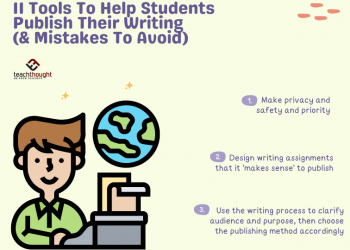When colleges want students to go to a big football game, they invite them. They make big, fancy signs. They post colorful fliers on bulletin boards in every building. They post on social media, reminding them to attend.
To encourage students to vote, colleges might consider that same approach, said Sarah Batson, a senior at the University of Texas at Austin who chairs the national student advisory board for the nonprofit Campus Vote Project.
If colleges told students about the nearest ballot box or polling place and added nudges like, “We think that every student is going to vote there and we can’t wait to see you there,” Batson said, she thinks it would make a big difference.
“That is how the schools get students to go to games and to go to their own events and to participate in the community outside of campus,” Batson said. “And I think that excitement expressed by campus administrators will encourage them to make it a priority, or if not make it a priority, to consider how other students may already be doing that and how they could join in.”
“Convenience is not really a luxury, it’s a necessity.”
Dylan Sellers, Campus Vote Project’s national manager for historically Black colleges and universities
Only about half of eligible voters ages 18 to 24 cast votes in the 2020 election, the lowest turnout by age group, according to the Census Bureau. Data shows that voter turnout tends to increase with age, income and education level.
College students are motivated to vote by empowering language and reminders of the power their collective vote can have, a recent survey by Campus Vote Project found, but inconvenience and a lack of information tend to deter them.
Campus Vote Project is a nonpartisan, nonprofit group that works to make voting more accessible to students. The survey results (collected at public and private four-year colleges and community colleges in August) are meant to act as a roadmap for college leaders and advocates to eliminate the logistical barriers young people face and help them realize that their vote matters, the report says.
“Every election cycle, it’s the same thing,” said Mike Burns, the national director of Campus Vote Project. “There’s a new group of young people every election that needs to be welcomed into our democracy and learn that process. I think our communities are better and our democracy is more responsive when more people participate, and young people are one of the more underrepresented groups we have.”
Related: Using youth activism to educate students about democracy and voting
Many students surveyed cited a lack of information, such as how and where to vote and who the relevant candidates are, as their biggest obstacle to voting.
Some students said they would like a class period dedicated to voting information. Some said they’d attend in-person or online events to learn more about the candidates.
Come Election Day, students said they need voting to be more convenient. Often, and especially at community colleges, students are busy juggling class with other life responsibilities, including work and child care. Many don’t have cars, and many must rely on public transportation to get to school and work. Adding a stop at a polling place on an already busy day may not be feasible. Polling sites on campus or nearby would help. And more than a third of students surveyed said professors should avoid Election Day when planning exams or due dates.
“Convenience is not really a luxury, it’s a necessity,” said Dylan Sellers, Campus Vote Project’s national manager of historically Black colleges and universities. “It’s very difficult to explain to a college student in 2022 why they can have secure banking, but they can’t vote online, they can’t even register to vote online.”
Anusha Natarajan, the vice chair of the national student advisory board and a senior at Arizona State University, said she is passionate about finding ways to engage different racial and ethnic groups in the election process. She also said that, because students’ top source of information about voting was social media, followed closely by parents and families, it’s important to get accurate information on social media.
Related: Can we teach our way out of political polarization?
Even if they plan to vote, only about half of those surveyed said they felt their vote had the power to make change. Student voting advocates say that this doubt is among the biggest barriers to motivating young people to vote.
Sellers, who works on voting access issues with HBCUs across the country, said that HBCUs differ from many other institutions on this point; they have a long history of civic engagement and activism that continues to be instilled in students today.
Black students, who made up about 16 percent of the students surveyed, were particularly concerned about student loan debt, systemic racism and police reform, in the section of the survey that asked for the top three issues driving students to vote, Sellers said. The top three issues chosen overall were cost of living and inflation, abortion access and gun violence prevention. Among the entire survey group, 27 percent selected student loan debt, 27 percent chose systemic racism, and about 12 percent selected police reform.
“I think our communities are better and our democracy is more responsive when more people participate, and young people are one of the more underrepresented groups we have.”
Mike Burns, national director, Campus Vote Project
The outsize effect these issues have on Black Americans tends to drive Black students to the polls in hope of change, he said.
“Whenever we’re having conversations about voting, it is really tied to a cultural expression of almost survival,” Sellers said. “And so it is a very important thing.”
Though some of the recommendations that came out of the survey may take a while to implement, advocates say there are still things that can be done to help students vote in November.
They say it’s not too late to adopt Batson’s football game strategy of excitement and encouragement around voting. It’s not too late to try to get students accurate, nonpartisan information about the election process. It’s not too late to reschedule exams and big assignments that are due around Election Day. In some places, it’s not too late to register to vote.
And even if it’s too late to add new polling places and drop boxes, Burns said advocates should be planning ways to get students to nearby voting sites by organizing shuttles or other transportation from campus.
“How do we get to voters where voting is, if we can’t get the voting to where the voters are?” Burns said.
This story about college voting was produced by The Hechinger Report, a nonprofit, independent news organization focused on inequality and innovation in education. Sign up for the Hechinger newsletter.
Related articles
The Hechinger Report provides in-depth, fact-based, unbiased reporting on education that is free to all readers. But that doesn’t mean it’s free to produce. Our work keeps educators and the public informed about pressing issues at schools and on campuses throughout the country. We tell the whole story, even when the details are inconvenient. Help us keep doing that.
Source by hechingerreport.org










